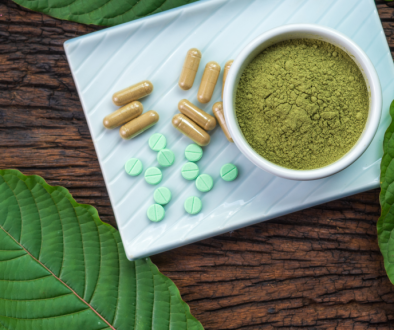A journey through opioid/pain pill addiction and how to break the cycle.
The journey through pain pill addiction can be difficult. Knowing the signs can help you or a loved one break the cycle and access treatment.
According to the 2019 National Survey on Drug Use and Health (NSDUH) almost 10 million people misused prescription pain relievers that year. About one-in-five people will continue to use pain pills over three months after having a surgery. Between 21 to 29 percent of patients who are prescribed opioids for chronic pain misuse them and about 10 percent of people using an opioid for chronic pain develop an opioid use disorder.
People who smoke, have bipolar disorder, depression, or pulmonary hypertension are at the highest risk of continued use of opioid medications, according to a 2021 report. Researchers are very concerned about the rising rate of pain pill misuse and the lack of education around the effects of these drugs and the ease at which people become addicted.

Drug dependency and addiction are different. When a person is physically dependent on a drug, their body has built up a tolerance to it, and a higher dose of the medication is needed to get the same effect. An addiction is more than physical, it’s also emotional and is often associated with uncontrolled behaviors. Some signs of pain pill addiction includes:
- Thinking about the medication a lot
- Taking a different amount than what was prescribed
- Going to multiple doctors for the same prescription
- Procuring painkillers from other sources
- Feelings of anger or anxiety arise when others discuss it
- Using painkillers long after the pain is gone
- Personality changes
Prescription painkillers can stimulate areas of the brain that are associated with good feelings, stimulate the reward system of the brain, and release a neurotransmitter called dopamine. At the dosage and frequency prescribed, prescription painkillers are usually safe. When the drugs are used in a way not intended by a physician, the painkillers can be as dangerous as street drugs and users may need interventions such as rehab to help them not use the drug any longer.

Combining prescription drugs with other downers such as alcohol or benzodiazepines can lead to serious health effects including respiratory arrest and death. Combining prescription painkillers with stimulants such as cocaine or meth can lead to cardiovascular collapse and death.
The most common pain pill addiction side effects include:
- Social isolation
- Financial ruin
- Joblessness
- Crumbling interpersonal relationships
- Legal problems
- Incarceration
- Homelessness
- Consequences of risky behaviors
- Increasing physical consequences of prescription painkiller abuse
- Seizures
- Overdose
- Suicidal thoughts
- Death
Withdrawal occurs when an individual has become physically dependent upon prescription painkillers and the user abruptly stops taking the drugs. Due to possibly dangerous effects of withdrawal, individuals should detox under the skilled care of a rehab facility. The most common withdrawal symptoms for prescription drug addiction can include:
- Restlessness
- Irritability
- Drug craving
- Increased respirations
- Enlarged pupils
- Loss of appetite
- Tremors and shaking
- Sweating
- Insomnia
- Muscle and bone pain
- Nausea and vomiting
- Diarrhea
Cove can help you with any state of pain pill use that you’re at. We provide comprehensive mental health services with a focus on substance abuse and addiction disorders. If you have a young person or family member that you are concerned about, contact us today at www.covebh.org or call us 813-384-4000.







